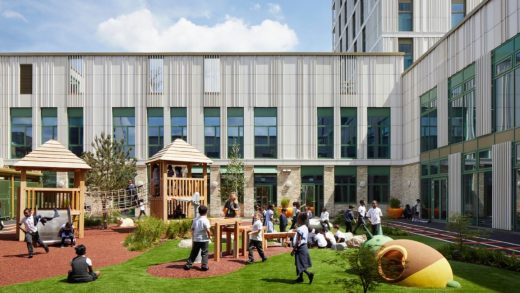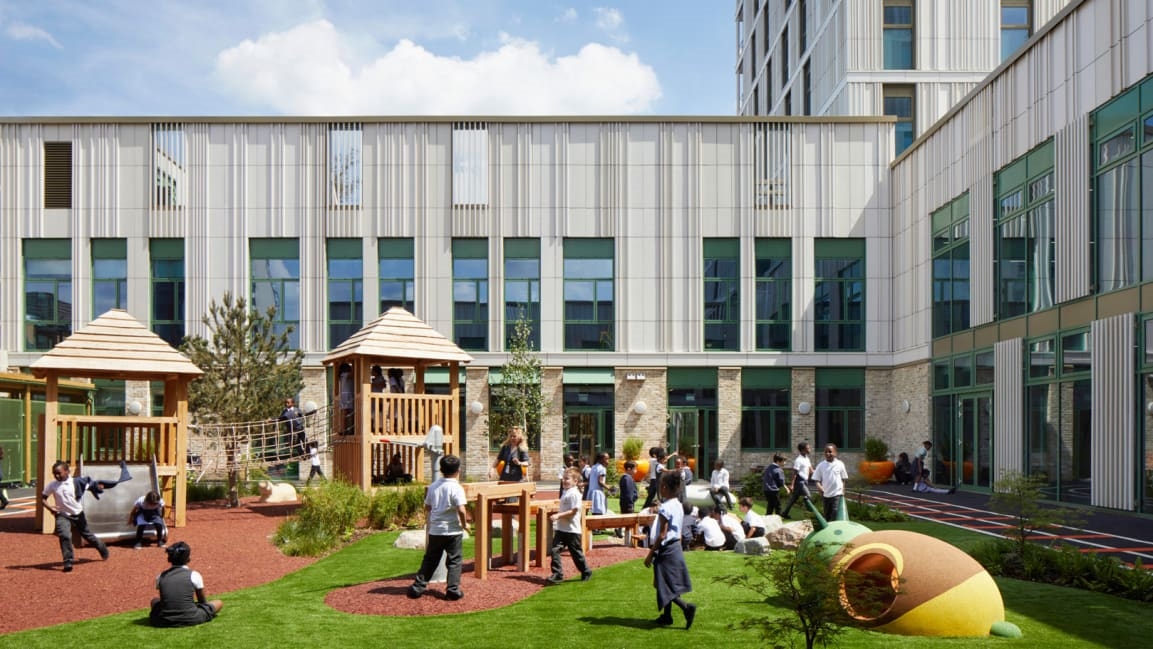In London, an experimental building houses two very different types of tenants
A new building in London is taking mixed-use architecture to noisy but surprisingly community-oriented dimensions. Located in the borough of Hackney, the two-tower, 89-unit apartment building has been built directly above a nursery and primary school – making a playground full of screaming school kids and several floors worth of upper-income urban dwellers unlikely neighbors.
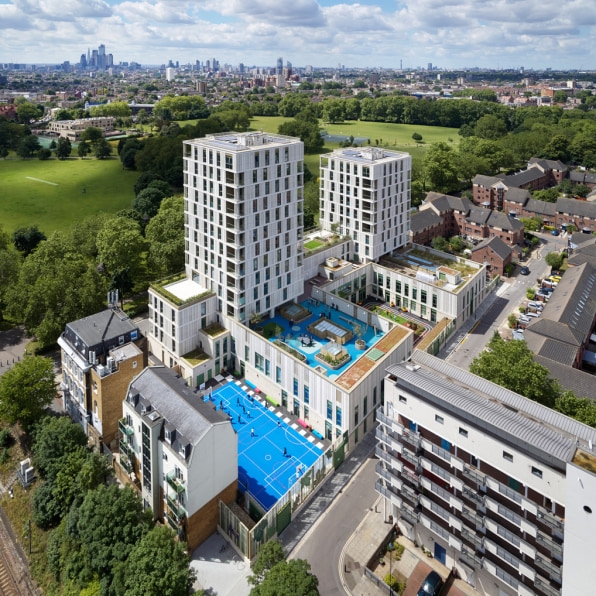
Designed by the UK-based architecture firm Hawkins\Brown, the project is a bold combination of building types that aren’t normally co-located. Designed with a gridded creamy terra cotta facade that’s shared between the residences in the towers and the C-shaped school that juts out from their base, the building makes clear that these two very different uses are meant to be together. In a relatively tight urban footprint, the modern apartments and their shaded patios are above but not directly looking down onto the playgrounds of the Nightingale Primary School, which teaches students from preschool through fifth grade.
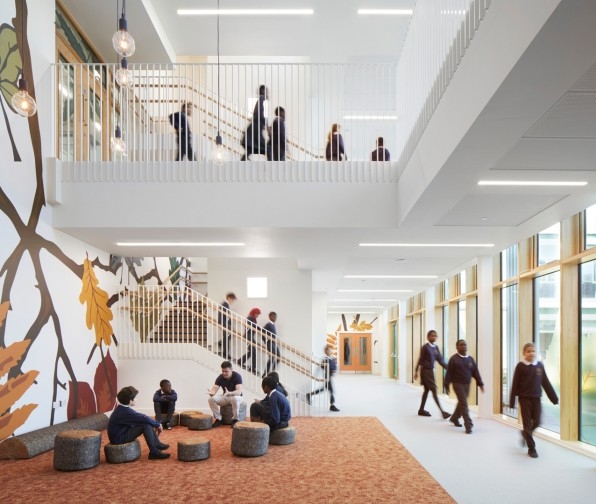
“The building celebrates its hybrid nature rather than trying to be two separate things,” says architect Rebecca Watts, associate director at Hawkins\Brown. She says the two different spaces are linked in subtle ways but still operate independently, so there aren’t trains of backpacked eight-year-olds tearing through the residence lobby or residential balconies peering directly into classrooms. “We gave the horizontal to the school and the vertical to the residential,” Watts says.
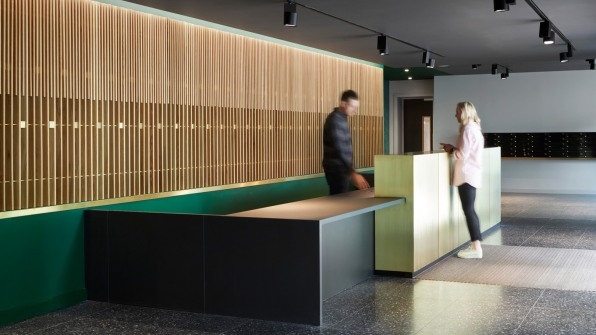
On one side, the two mid-rise apartment towers rise above the school and its playgrounds on both the ground floor and the school’s second story roof. On the other side, the residences have wide views out over Hackney Downs, a 40-acre park directly adjacent to the site. Rooftop terraces for residents peer out over the park but within sight of rooftop spaces dedicated just for the children, with outdoor play spaces on one and a wildflower garden and beekeeping space on the other. The school’s classrooms–including a cooking room, indoor climbing wall, and spaces designed to accommodate children’s sensory sensitivities–fill two light-filled floors, and one room was carved through the residential space to provide the school with views out to the park.
The school was always the priority in the design. Watts and her fellow designers made sure to consider the angle of windows and the orientation of the residential outdoor spaces to avoid too much overlook on the school, and tried to create more separation between the apartments and the school by placing the residential buildings’ common spaces on the floors closest to the classrooms.
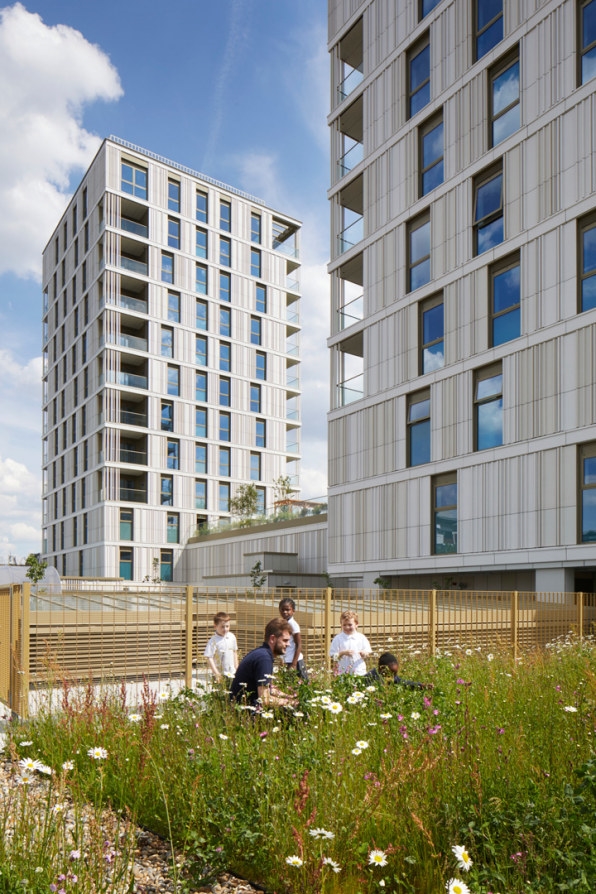
The school’s design also had to be considered from the perspective of residents. Since some people might recoil at the idea of living above a playground regularly filled with dozens of schoolchildren, Watts says the strategic placement of high-noise areas like the main hallway meant that there could be enough of a spatial buffer to eliminate much of the noise that residents might hear.
But complete segregation wasn’t the goal. There are also some shared spaces that allow for interaction between the residents and the school, including a basketball court in the playground that the residents can access. There’s also a community room that, before the latest pandemic-related school closures, had been open to the public for coffee mornings and sessions where parents could bring their younger-than-school-age children to socialize. These small overlaps serve to draw linkages, and to give the project a nexus with the community beyond. “We’ve had really positive responses from both the residents and the children,” Watts says. “There’s a synergy between the two uses.”
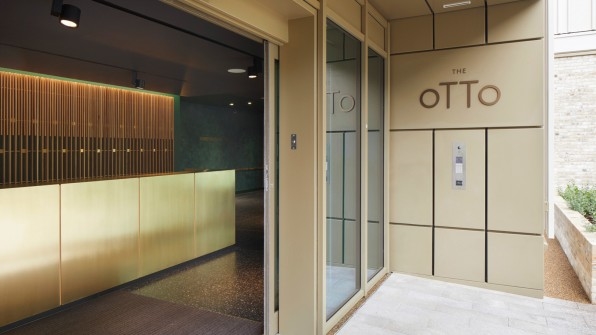
The connection between the residents and the school is more than just proximity. Part of the sales of the apartments has been used to offset the costs of school facilities, and enables the design to provide more space and features than the typical school project, Watts says. The apartments, she says, sold out quickly. “That shows it hasn’t put off buyers,” she says. “It shows that the model can work, and other boroughs can do this and start to fund schools.”
Better integrating children and the spaces built for them into society can also be a way to improve intergenerational understanding and community. The interconnected apartments and school suggest that adults and children don’t have to be treated like different species in a zoo. By bringing them together, this space shows that school kids and apartment dwellers can peacefully coexist.
(13)

